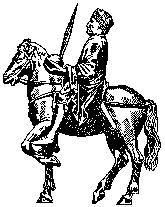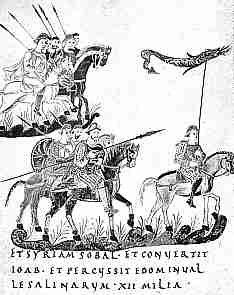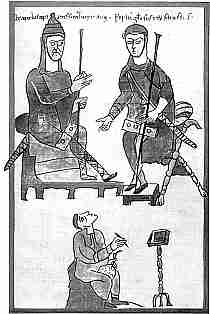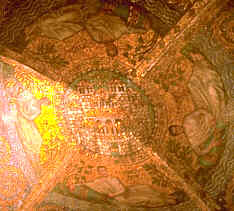 |
|
Scribes
and Libraries of the Carolingian Court |
|
The
significance of the king and emperor Charlemagne to the fostering and
preservation of literate Latin culture at a time when it was struggling
back across the landscape of early medieval Europe does not seem to be
in dispute. While Charlemagne's court and chancery
extended written culture beyond the monastic cloisters where it was confined
in much of northern Europe, it was a collaborative endeavour with the
church rather than a separate strand in the history of literacy. |
|
|
The
image of the man as portrayed by the sources of his time is dualistic. The
man of action galloping out to subdue enemy after enemy to expand his realm,
and being portrayed in terms befitting a Roman Emperor until he actually represented
himself as one, contrasts with the pious lover of learning who worked to reform
the practices of the church and revive the literate culture of Classical Rome.
These two aspects combine to produce a pretty powerful image. However, his
legacy in history and legend cannot be put down just to medieval spin doctoring. |
|
|
|
At
left, a Carolingian manuscript depicts mounted soldiers armed with lances
and shields going to war behind a standard bearer (St Gall, Bibl. conventuelle,
ms.22). At right, a 10th century miniature depicts Charlemagne giving counsel
to his son Pepin, king of Italy, while a scribe records proceedings (Modena
Cathedral Archives, Cod. ord. 1. 2., f.156.) |
|
While
many authors have made much of Charlemagne's love of learning and his
desire to reinvigorate literate Classical culture, Christopher De Hamel
paints a picture which places books within the framework of conquest and
redistribution of wealth which allowed the Carolingian realm to exist.
Alliances of fractious noblemen were held together through the redistribution
of conquered lands and booty. The wealth of the kingdom was invested in
treasure. De luxe manuscripts
lavishly decorated with gold could be seen as part of this national treasure,
conferring prestige to their owners, and distributed in exchange for loyalty.
The use of gold in prestigious Carolingian manuscripts has been attributed
to Byzantine influence, apparent also in the painting style of miniatures
and Carolingian architecture, but that does not preclude a social significance
particular to Frankish culture. |
|
|
Lavish
gold decoration on the mosaic ceiling of the ambulatory vault in Charlemagne's
Palatine Chapel at Aachen. |
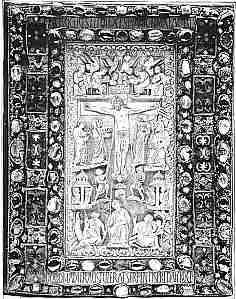 |
Some
especially lavish manuscript books of the era demonstrate the fondness
for extravagant and expensive decoration in their covers. The example
at left combines the use of precious materials in the form of ivory, gemstones,
enamel and gold with the religious imagery of the crucifixion. The image
projected is that of a reliquary which contains, not sacred bones, but
sacred words. Treasure had its symbolic value in the church as well as
in the world of secular power. |
| Jewelled
and ivory cover of the Metz Evangelary (Bibliothèque Nationale, MS.
Lat. 9383). |
|
The
most expensive and decorative volumes are those most likely to survive
over many centuries, while the more humble books used regularly for religious
practice or scholarly learning are more likely to be worn out or lost.
An assessment of the value placed on literate culture in the Carolingian
court and a reconstruction of the literary works contained and copied
there involves a great deal of historical detective work. Very many works
which owe their survival to copying by court scribes
or by scribes in monasteries with close associations with the court are
now known only from later copies, and in many cases very much later copies. |
|
While
the concept of expensive volumes as booty and bribes fits well with the image
of kingdoms led by belligerent barbarian generals trying to keep their supporters
on side, the greater valuation of literate culture suggests further aspirations.
Carolingian literate culture was also concerned with standardisation and the
reintroduction of order to the practices of church and state. |
|
Charlemagne
had a court library, which was reportedly dispersed at his death. He also
had a chancery producing official documents. The court library and its
scribes evidently worked collaboratively with monastic libraries and scribes.
Outside the court, some survival of Roman law and practice was probably
represented by notaries
and scribes who were continuing the traditions of the past, but the survival
of their output is very limited. Much has to be learned through deductive
methods. |
|
continued
 |
 Scribes
and Libraries Scribes
and Libraries |
 Authors,
Scribes and Libraries Authors,
Scribes and Libraries |
|
 |
 |
 |
 |
